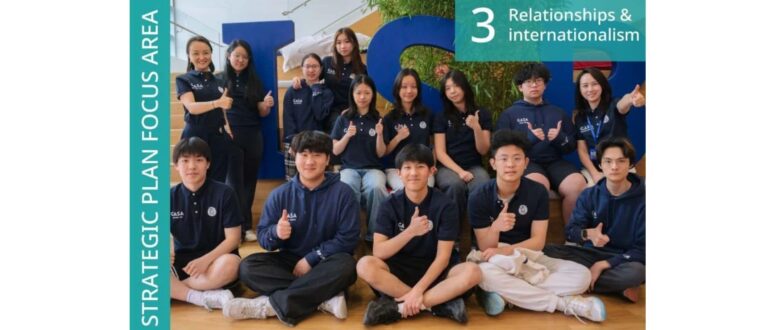Michael Fullan is a renowned Canadian philosopher of education. He is a prolific writer on educational policy, school reform, learning and teaching strategies, and much else. He is a Professor Emeritus of the University of Toronto and the former Dean of the Ontario Institute for Studies in Education. He is also co-leader of the New Pedagogies for Deep Learning global initiative.
For a long time, Fullan has been fascinated by the styles of leading and effective leadership. Last year, he published an engaging short book called Nuance: Why some leaders succeed and others fail. Fullan’s thesis, born of years of thought, is well worth examining. Right now, and especially in this time of pandemic, we need leadership that goes beyond ‘good enough’, we need leadership that achieves excellence. A consideration of Fullan’s ideas could help.
A consideration of Fullan’s ideas
This is how Fullan begins:
This book has two related purposes: One is to make the case that society, in general, is worsening and that education, in particular, is less effective at its main role of producing better citizens. The second purpose is to identify the characteristics of the new kind of leader who will be required – one who can get beneath the surface and help us understand and leverage deep change for the better. I call such leaders nuanced because they learn and grasp how things work, and then help themselves and others figure out how to make them work better.
Fullan does not go into etymology at all, but the word ‘nuance’ has an unusual history. It originates in the Latin noun, ‘nubes’, a cloud. True to its cloudy nature, ‘nubes’ billowed into French in medieval times as ‘nue’, also meaning ‘cloud’ but giving rise to a secondary word, a verb, ‘nuer’ with a meaning connected to creating varying shades of color. This then produced the Middle French word ‘nuance’, which meant a shade of color. Those magpie speakers of English, collecting shiny verbal objects everywhere in the 18th century, borrowed nuance and gave it its meaning in English of a subtle variation, a slight gradation in meaning, emotion, tone, etc.
So, let’s come back to Fullan, and nuanced leaders, with this background information about the word that gives his book its title. Fullan references Leonardo Da Vinci as an exemplar of a nuanced pioneer and pacesetter. He quotes from Da Vinci’s writings, and from writings about him, to show that Leonardo was a formidable expert at combining observation and imagination, at noting details but also understanding whole systems, at responding to outer surfaces but also seeing inner workings. Subtlety and complexity are the hallmarks of Leonardo’s craft, and art: Fullan claims that he was a master of seeing the forest and the trees together, in dual and simultaneous focus. This is nuance to the nth degree.
But all this is very general. Fullan is specific, too, and offers some detailed insights into nuanced leadership styles. Here are three of them. All have clear relevance to and importance for what we are experiencing now, all over the world. First, ‘be right at the end of the meeting’. Do not lead meetings, or other events, as if you have all the answers at the start. ‘Joint determination’ of action and ‘integrated unity’ make for better outcomes. What’s important is for all to be right, together, in the end, not for the appointed leader to be right individually and separately at the beginning. Second, be adaptable, and change your mind when a strategy is not working. It is a strength, not a weakness, that ‘nuanced leaders never become settled experts because they are always learning’. And third, grow ‘culture-based accountability’. ‘Use the group to change the group’, and do this through, amongst other strategies, collaboration, candid feedback, and the encouragement of autonomy.
Near the end of his book Nuance, Fullan writes:
Nuance leaders have a curiosity about what is possible, openness to other people, sensitivity to context, and a loyalty to a better future. They see below the surface, enabling them to detect patterns and their consequences for the system. They connect people to their own and each other’s humanity. They don’t lead; they teach. They change people’s emotions, not just their minds. They have an instinct for orchestration.
That phrase, ‘an instinct for orchestration’ resonates like the fine and blended music to which it refers. For me, there is much to agree with, and to praise, in Fullan’s central thesis. However, any book about a varied topic that is founded on a single idea is likely to be only partial. This is particularly so, ironically, when that central idea about leadership invites us to accept many shades of meaning and variations of approach, and then gives us only one, even if that one idea, ‘nuance’, has multiple layers, like an onion.
We peel onions at our peril.
A nuanced evaluation of Nuance reveals that we might need even more subtlety, variation, and layering in ways of leading. On occasion, leading ways have to be direct, and not too delicate. Sometimes, attempting to be consensual is not in the common interest. Directive decision-making and leading, based on carefully collected information, opinion, and data, work better in certain situations. (That’s an insight from me, to add to Fullan’s three.)
With warm regards,
Malcolm McKenzie – Head of School







